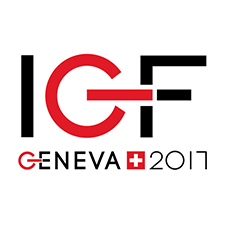IGF 2017 – Dynamic coalition on blockchain technologies
26 Nov 2019 09:30h - 11:00h
Event report
[Read more session reports and live updates from the 12th Internet Governance Forum]
The moderator, Mr Benedikt Schuppli, a member of the Dynamic Coalition on Blockchain Technologies, opened the session by giving an overview of the Coalition’s work. He mentioned the interdisciplinary nature of the initiative and listed the working groups which are structured around the topics of blockchain and government, blockchain governance, identity, legal responsibility and smart contracts, and ICOs and tokens. Mr Schuppli then went on to explain the dynamic of the session and introduced the speakers.
Mr Henning Diedrich, German programmer and the architect of the hyperledger blockchain, joined the conversation through a previously recorded audio message. He spoke briefly about the bitcoin ecosystem, its history, challenges and applications. He emphasised the components of liberty, and consensus within the bitcoin community, and commented on the potential application of blockchain for basic citizen activities such as those employed for government identification, obtaining car licenses, or even attending school, if medical records of vaccinations are linked to blockchain technologies.
After Diedrich’s presentation, the moderator opened the discussion to questions from the audience. The first question was on the definition of bitcoin. Mr Schuppli answered by saying that, in his opinion, bitcoin could be seen ‘as digital gold with a payment function’ because it is used mostly as a means to store value. Another question delved into the discussion of whether there should be institutions for blockchain governance, like a sort of ICANN for blockchain. Another participant went further by asking why a distinction between Internet governance and blockchain governance should be made at all, since blockchain is an Internet-enabled technology. For the moderator, governance institutions for blockchain are needed, but the governance structure should differ from the one deployed around the Internet, as blockchain challenges and the blockchain ecosystem are different from those of the Internet.
The round of questions continued with the issue of environmental sustainability. Another member of the audience commented that bitcoin consumption of energy is now at the level of the energy consumption of Denmark. Finally, there was a question on the possible application of blockchains. A participant brought up the example of refugees, where blockchain technology could be used to provide proof of existence in cases where people sometimes lose or cannot access their physical identity documents. Blockchain technology could also be employed as a way to certify land tenancy for those who are fleeing a conflict zone. Furthermore, another discussant mentioned the possibility of using blockchain technology to solve the fake news problem, as this technology is, in essence, a method of establishing veracity. With blockchain there could be a decentralised consensus mechanism to establish whether certain information is true or false.
To close the session, Mr Schuppli left some open-ended questions for the audience to reflect on: How can blockchain governance experts or people involved in these decision-making processes learn from Internet governance? Should blockchain governance require the introduction of an institution such as ICANN? Should there be global norms introduced with which to govern blockchain? And finally, how can the decentralised aspect of blockchain be maintained?
By Tamar Colodenco
Related event

